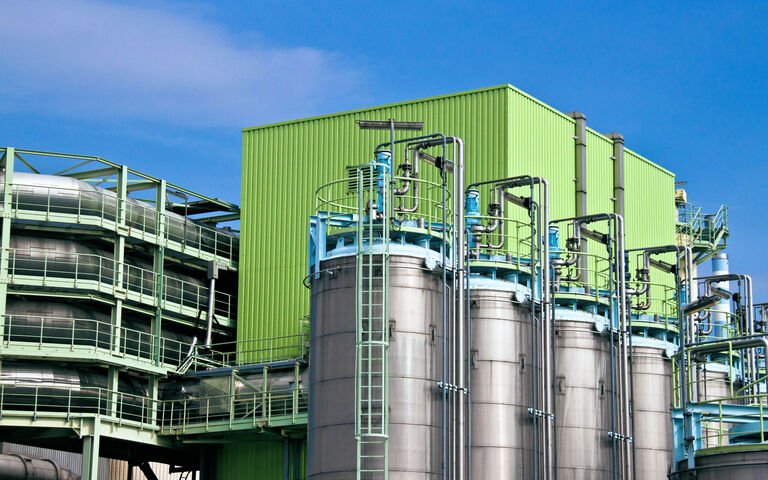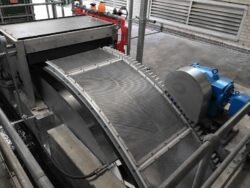Wet Air Oxidation in Wastewater Treatment: Efficiency and Process Insights

Wet air oxidation is a process utilized to treat wastewater by oxidizing pollutants present in the water. This method involves reacting the waste components with oxygen at elevated temperatures and pressures to convert them into less harmful compounds. It is a versatile approach capable of breaking down a wide range of organic materials, including those that are not easily biodegradable. Applications include the treatment of industrial effluents, sludges, and contaminated water, making it an integral part of modern wastewater management strategies.
One of the main advantages of wet air oxidation is that it can effectively reduce the toxicity and volume of the wastewater, which can simplify further treatment processes or make the disposal more environmentally friendly. In addition to its ability to handle complex waste streams, the process itself has been subject to significant technological improvements that have made it more efficient and cost-effective over time. Design and operational considerations are crucial to ensure the optimal performance of the system and to manage the influence it has on the environment.
Key Takeaways
- Wet air oxidation transforms hazardous wastewater pollutants into benign substances through an oxidative process.
- The method helps decrease wastewater toxicity and volume, facilitating safer disposal or subsequent treatment.
- Ongoing improvements in process efficiency and economic viability make wet air oxidation a sustainable wastewater treatment option.
Fundamentals of Wet Air Oxidation
Wet Air Oxidation (WAO) is a process for treating wastewater that employs high temperatures and pressures to oxidize organic and some inorganic materials in an aqueous environment.
Principles of Wet Air Oxidation
Wet Air Oxidation operates on the premise that water, at elevated temperatures (typically between 125 and 320 degrees Celsius) and pressures (usually 10 to 220 bar), can act as a solvent, reacting medium, and a participant in the destruction of contaminants. The presence of oxygen is critical, as it acts as the oxidant, either provided by air or pure oxygen. This process is particularly useful for oxidizing complex compounds in wastewater, transforming them into safer, simpler molecules like carbon dioxide and water.
Chemical Reactions Involved
In Wet Air Oxidation, organic material in wastewater undergoes several chemical reactions, primarily oxidation. The contaminants react with the oxygen, where carbon-hydrogen bonds are broken, and new bonds form, creating carbon dioxide and water. Persistent organic pollutants, which are not easily biodegradable, can also be broken down effectively using WAO. This environmentally favorable outcome suggests that WAO addresses the treatment of Bayer liquor, among other industrial wastewaters, by reducing toxicity and facilitating compliance with discharge regulations.
Process Design and Operation
In Wet Air Oxidation (WAO) systems, wastewater undergoes treatment to reduce the concentration of pollutants and organic materials. The design of such systems and their operational parameters are critical to achieving optimal performance and environmental compliance.
Reactor Designs
Reactor designs for wet air oxidation can vary, but they generally fall into two categories: batch and continuous flow reactors. Batch reactors treat wastewater in discrete amounts and allow for precise control over reaction times and conditions. Continuous flow reactors, on the other hand, treat wastewater as it flows through the system, which is beneficial for large-scale operations. Modern systems often employ a tubular reactor design where the wastewater and oxygen are introduced at high pressure and temperature, facilitating the oxidation process.
Process Parameters
Key process parameters for WAO include temperature, pressure, and oxygen supply. Temperatures typically range from 150°C to 320°C and pressures can reach up to 300 atmospheres, which are essential to initiate the oxidation reactions. The amount of oxygen must be carefully controlled to ensure complete oxidation of contaminants, and it’s often supplied either as pure oxygen or as air. Residence time in the reactor is also a crucial factor, as it determines the extent to which pollutants are oxidized.
Operational Considerations
Operating a WAO system requires continuous monitoring and control to handle the variations in wastewater composition and flow rates. This includes the management of sludge handling and maintenance of ancillary equipment, such as pumps and heat exchangers. Safety is of utmost concern due to the high temperatures and pressures involved; thus, systems must be equipped with pressure relief valves and proper containment measures. Operational efficiency can be optimized by recovering heat from the treated wastewater to preheat incoming wastewater or generate steam for other industrial processes.
Applications in Wastewater Treatment
Wet air oxidation (WAO) is a process used to treat a variety of pollutants in wastewater streams. It utilizes high temperatures and pressures to oxidize compounds, making it particularly effective in reducing the toxicity and volume of wastewater.
Industrial Wastewater
In the realm of industrial wastewater, WAO is applied to treat effluents containing difficult-to-degrade organic compounds, such as phenols, sulfides, and complex polymers. Industries such as chemical manufacturing, pharmaceuticals, and petrochemicals rely on WAO for its effectiveness in breaking down these pollutants. By implementing WAO, they can ensure that discharged water meets environmental regulations. The high-temperature and pressure conditions of the WAO process achieve significant reductions in chemical oxygen demand (COD) and biochemical oxygen demand (BOD) levels, important indicators of water quality.
Municipal Wastewater
For municipal wastewater treatment, WAO serves as an advanced treatment step that targets the removal of organic compounds that are resistant to biological degradation. It complements existing biological treatment processes and can be particularly valuable for treating sewage with a high concentration of organic matter. WAO helps municipalities abide by stringent discharge standards, minimizing the environmental impact of effluents released into natural water bodies.
Sludge Reduction
One of the notable benefits of using WAO in wastewater treatment is sludge reduction. Sludge, the byproduct of wastewater treatment, poses significant disposal challenges. WAO can effectively minimize sludge volume by oxidizing organic content, which can lead to reduced handling, treatment, and disposal costs. This process not only alleviates the burden on landfills but also recovers resources, as the heat generated during WAO can be harnessed and redirected within the treatment facility.
Environmental Impact and Sustainability
In the context of wastewater treatment, Wet Air Oxidation (WAO) is evaluated for its effectiveness in reducing environmental impact while maintaining sustainability. This process is designed to oxidize water-soluble wastes that are hard to treat by biological means. Emphasizing the balance between ecological benefits and resource efficiency, the subsequent subsections delve into key sustainability factors.
Pollutant Removal Efficiency
WAO has been proven to effectively remove a wide variety of pollutants. The process operates by introducing oxygen or air into wastewater at high temperatures and pressures, which breaks down complex organic substances. Studies have demonstrated its competence in reducing Biological Oxygen Demand (BOD) and Chemical Oxygen Demand (COD), which are pivotal for mitigating the effects of polluted water discharge into the environment. For instance, it can aim to treat toxic and non-biodegradable compounds, leading to safer effluent disposal.
Energy Consumption
Although WAO can be energy-intensive due to the need for high temperatures and pressures, it is generally considered energy-efficient when compared to alternative thermal processes. Efficiency is maximized when the heat generated from the oxidation process is recovered and reused. Energy consumption is a crucial aspect of sustainability, and any advancements in this area could potentially enhance the process’s sustainability profile.
Emission Control
Emission control is a vital component when assessing the environmental impact of WAO. The process is designed to minimize the release of harmful emissions into the atmosphere. WAO can convert noxious wastes into water, carbon dioxide, and biodegradable organics, significantly reducing the potential for environmental contamination. However, it is important to monitor the system to prevent releasing nitrogen oxides and other potentially harmful byproducts, to ensure compliance with environmental regulations and promote a more sustainable practice.
Technological Advancements and Research
Technological advancements in Wet Air Oxidation (WAO) are contributing significantly to the improved treatment of wastewater. Rigorous research efforts continue to optimize this process while addressing current challenges.
Innovations in WAO Technology
In the realm of WAO technology, innovative designs, and process improvements have led to increased efficiency and effectiveness in treating wastewater with high organic loads. High-pressure systems have become more robust, offering better oxidation rates of complex molecules. Improvement in reactor design has also allowed for enhanced contact between oxidants and contaminants, which is critical for the WAO process. One notable advancement cited is the use of supercritical water oxidation, which efficiently oxidizes hazardous waste compounds under supercritical conditions, significantly above water’s critical point of 705 °F and 221.1 bar.
Future Research Directions
Future research in WAO technology is looking at scalability and economic viability, ensuring that WAO systems are not just effective but also affordable for widespread implementation. Investigations are also focusing on the reduction of energy requirements and the minimization of by-products, which may pose secondary environmental concerns. The integration of WAO with other complementary treatment technologies is another area of interest, as it may lead to hybrid systems that optimize overall wastewater treatment performance. Moreover, the impact of WAO on the destruction of emerging contaminants, such as per- and polyfluoroalkyl substances (PFAS), is a crucial research frontier, with efforts revealing a greater than 99 percent reduction of PFAS using supercritical conditions.
Economic Considerations of Wet Air Oxidation
Wet Air Oxidation (WAO) in wastewater treatment is a capital and operationally-intensive process. It demands careful consideration of the economic investment and operational costs balanced against environmental compliance and the potential for resource recovery.
Cost Analysis
Wet Air Oxidation technology, when applied to wastewater treatment, encompasses considerable capital expenditure (CAPEX) and operational expenditure (OPEX). Initial investment includes equipment such as reactors, which are designed to withstand high pressures and temperatures, as well as installation and engineering costs. Operational costs involve energy consumption, mainly due to the heating of liquid streams the compression of air, and periodic maintenance. Additionally, the handling and disposal of residues generated from oxidation can further contribute to the total cost.
Financial Incentives
To offset the high upfront and operating costs, governments and environmental bodies may offer financial incentives for adopting WAO systems. These can come in the form of tax credits, subsidies, or grants aimed at encouraging industries to implement cleaner technologies. These incentives are significant in reducing the overall financial burden on companies, making WAO a more attractive option for wastewater treatment.
Market Trends
The market for WAO systems is influenced by regulatory pressure and the push towards sustainable treatment practices. There is a growing demand for advanced oxidation processes as industries face stricter discharge regulations and aim to minimize their environmental footprint. Trends indicate an increasing acceptance of WAO due to its ability to efficiently reduce chemical oxygen demand (COD) and remove hazardous compounds from high-strength industrial wastewater, potentially creating a market inclined toward more sustainable and stringent waste treatment solutions.
Frequently Asked Questions
How is wet air oxidation utilized within industrial wastewater treatment?
Wet air oxidation is employed to reduce the toxicity and volume of industrial wastewater. Industries use it to treat a variety of waste streams containing organic materials that are too concentrated for biological treatments. It effectively oxidizes substances such as sludge, phenols, and sulfides, transforming them into water, carbon dioxide, and other less complex chemicals.
Can you describe the basic principles of wet air oxidation and how they differ from traditional oxidation methods?
The basic principle of wet air oxidation involves reacting wastewater with oxygen at elevated temperatures and pressures. This accelerates the degradation of organic compounds. Unlike traditional methods, it operates in a liquid phase, which allows for the treatment of high-strength wastewaters that are not amenable to typical aerobic processes. Wet air oxidation provides an alternative when biological treatments are ineffective, offering a high degree of pollutant removal without the production of secondary waste.


